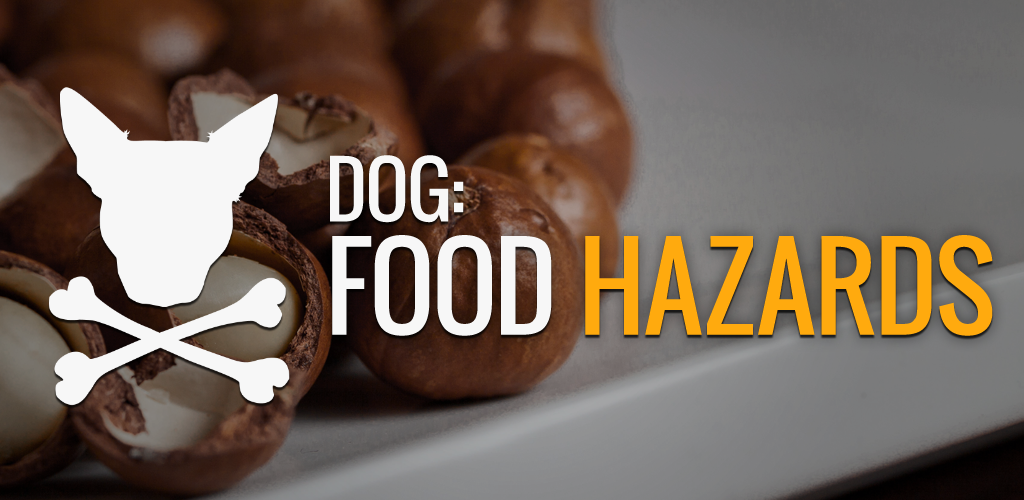
HUMAN FOODS TOXIC TO DOGS
We enjoy learning new things – especially when it comes to dogs! There are many indigestible foods, fruits to avoid, and foods that can make our dogs downright sick. Hopefully, the information we've compiled will benefit other dogs and their people.
Dog Food Hazards: Xylitol
Xylitol is a sugar-free sweetener commonly used in chewing gum, toothpaste, mouthwash, cough medicine, children's chewable vitamins, and other sugar-free foods/products. The amount of xylitol contained in these types of products ranges widely. Life-threatening hypoglycemia in dogs (low blood sugar) can occur within 10-30 minutes of the dog ingesting a small amount.
Quantities more than 0.1 gram per kilogram of body weight is considered a small amount. Larger quantities, 0.5 - 1 gram/kilogram, can cause acute liver failure, which can be fatal. A typical stick/square of xylitol gum contains around 1 gram of xylitol and can be toxic to a 20-pound dog.
Symptoms:
loss of coordination • depression • discomfort • weakness • lack of energy • collapse • black stools • jaundice • tremors • vomiting and seizures
May lead to coma & death.
References:
Dog Food Hazards: Chocolate
Chocolate, cocoa beans, cocoa butter and cocoa/cacao mulch, and other cocoa-based products, contain a chemical known as theobromine. Since dogs metabolize theobromine slowly, a small amount can cause life-threatening illness. In general, the darker and more bitter the chocolate, the higher the theobromine amount and the higher the risk of toxicity.
The amount of theobromine contained in baking chocolate is around 10 times higher than milk chocolate. As little as 2 ounces of baking chocolate can cause serious harm to a 20-pound dog, whereas it would take almost as much as 20 ounces of milk chocolate to do the same. Consider cocoa mulch to be similar to baking chocolate. It contains high amounts of theobromine and is highly toxic to dogs.
Symptoms:
vomiting • diarrhea • urination • hyperactivity • heart problems • tremors • seizures • include hypertension • heart problems • seizures • respiratory failure
May lead to coma & death if left untreated.
References:Dog Food Hazards: Certain Nuts
Nuts in general should be avoided. Most nuts such as Walnuts, Pecans, Almonds, and Hickory nuts are hard for dogs to digest, causing an upset stomach and can obstruct their throat or intestines. Macadamia nuts and Pistachios are rich in fat. They can not only give your dog a stomach ache but consumed in high amounts or through repeated consumption can cause pancreatitis. Macadamia nuts also cause weakness in the hind legs, the toxin in macadamia nuts has yet to be identified. Old or moldy nuts are the most threatening. The mold from Walnuts, Pecans, and Hickory nuts produces a toxic chemical that causes seizures and neurological symptoms.
Small amounts of most non-moldy nuts can be tolerated but should be avoided, except Pistachios and Macadamia nuts which should be never be fed to dogs. Moldy nuts (or any moldy foods for that matter) should always be avoided as the mold produces a toxin called Tremorgenic mycotoxin. Tremorgenic mycotoxicosis can occur rapidly within 2 - 3 hours after ingesting the moldy food.
Symptoms:
lethargy • vomiting • muscle tremors and muscle twitches • lack of coordination • loss of appetite • jaundice • acute abdominal pain • excessive salivation • fever • elevated heart rate • dilated pupils • involuntary eye movement • hyperesthesia • seizure
References- vetbook.org
- petinsurance.com
- petpoisonhelpline.com
- doggyloot.com
- thebark.com
- aspcapro.org
- vetmedicine.about.com
Dog Food Hazards: Mushrooms
Dogs are susceptible to mushroom poisoning due to their easy access. Wild mushrooms like those found growing in backyards, during walks, or in the park should all be considered toxic.
Mushrooms are classified into eight different categories depending on the toxin type. Of these eight types, the cyclopeptide toxin makes up the vast majority of poisonings among dogs. Amanita, Galerina, and Lepiota Lepiota are the most common species of mushrooms containing the cyclopeptide toxin. Cyclopeptides are quickly absorbed through the stomach and can affect the gastrointestinal tract and liver. Symptoms are typically seen between 10-12 hours after consumption. The symptoms seen depend on the species and toxin type consumed. Due to the large variety of toxicity levels in mushrooms, you should bring a sample with you when you visit your veterinarian.
Symptoms:
vomiting • diarrhea • abdominal pain • weakness • lethargy • jaundice • uncoordinated movements • excessive drooling • seizures
May lead to coma & death.
References:
Dog Food Hazards: Alcohol
Besides alcoholic beverages, alcohol is found in other household items such as disinfectants, mouthwash, medications, inks, dyes, paints, perfumes, gasoline, unbaked dough, rotten apples, and other fermenting foods/garbage. Alcohol is absorbed quickly into the bloodstream, and symptoms can develop as soon as 15 - 30 minutes after ingestion. Alcohol poisoning can occur by ingestion or absorption through the skin.
As little as 5-8 ml of alcohol per 2.2 pounds of body weight can cause alcohol poisoning. One shot (44 ml) of whiskey is more than enough to poison a 13-pound dog severely. Alcohol depresses the central nervous system. Dogs will become drowsy and lose their coordination. In large doses, it can cause the dog's heart and breathing to slow down and their body temperature to drop. Alcohol also causes damage to the liver and kidneys.
Symptoms:
drowsiness • weakness • low blood pressure • collapse • low blood sugar • low body temperature • seizures • respiratory failure.
May lead to death if left untreated.
References: